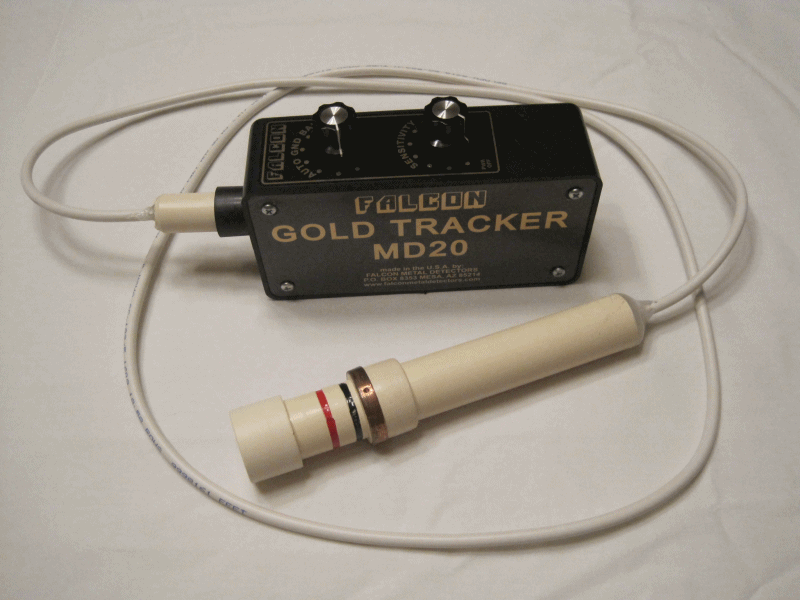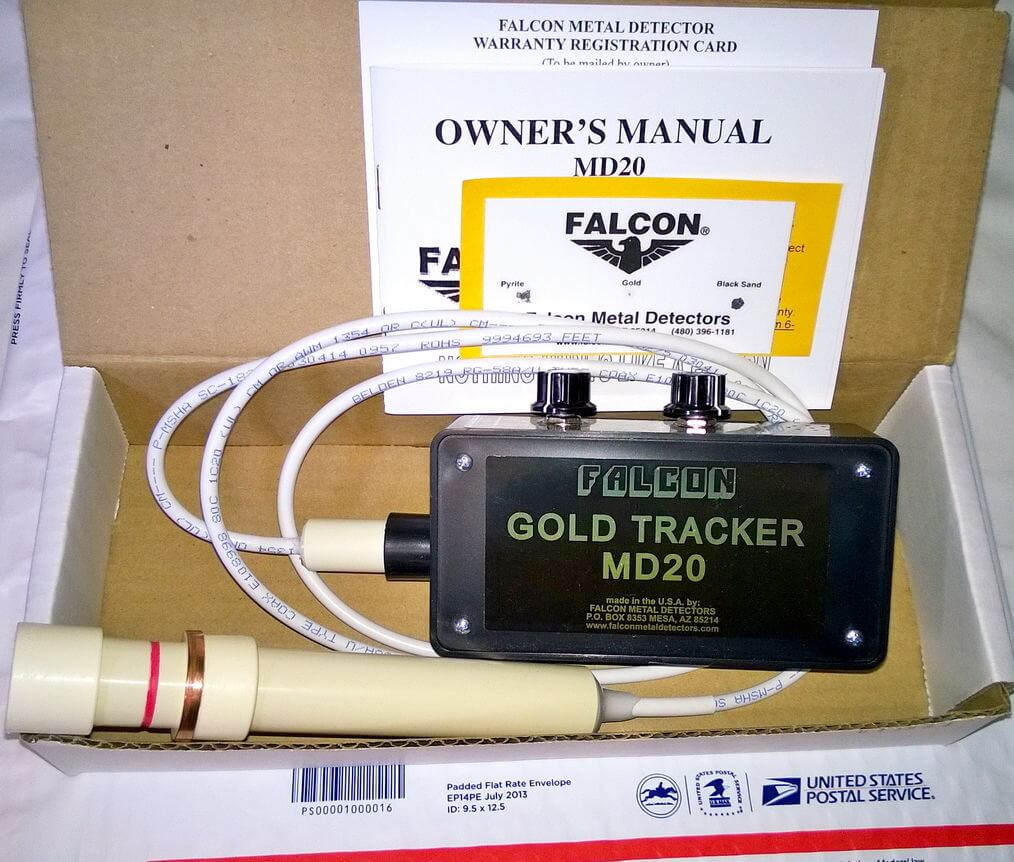
As to review its applications, in particular the Falcon Gold Tracker MD20 has been used successfully on diamond drill core and detected pinpoints of gold. While it is finicky and the probe head has to be in direct contact with the core, it is effective. The microscopic gold has then been checked with a 20X, internally lit hand lens with visible gold showing up. The loud buzzing sound fades as one moves away from the gold zone. This detector can also detect black sand (magnetite) which is often an indicator of placer gold. With an MD20, one can push the probe into the sand and gravel of a stream and penetrate below the surface, unlike some other models with a flat probe that is only good for the surface detection. Once gold and say, black sand have been detected in a stream gravel, the next step to verify it is to pan it to look for colors.
The Falcon Gold Tracker can detect gold, platinum, silver, copper, iron, zinc and lead among other metals and metallic minerals. Minerals containing such metals as copper and silver near the surface oxidize and create a halo around them, and this enhances the signal for detection. Gold on the other hand has no halo since it is inert, so that is why it needs a higher frequency.
The Falcon is a great metal detector for beginners and is designed to find small gold other detectors miss and get into places too small for other detectors. In old tailings piles, many gold-bearing rocks were tossed into them because the old time miners couldn’t see the gold by eye, when actually it could have been detected electronically. One prospector recently found 16 ounces of gold in a New Mexico tailings pile with one of these detectors. In conclusion then, metal detectors can be used both for placer and hardrock gold detection, and are a valuable part of a prospector’s modern tools.

